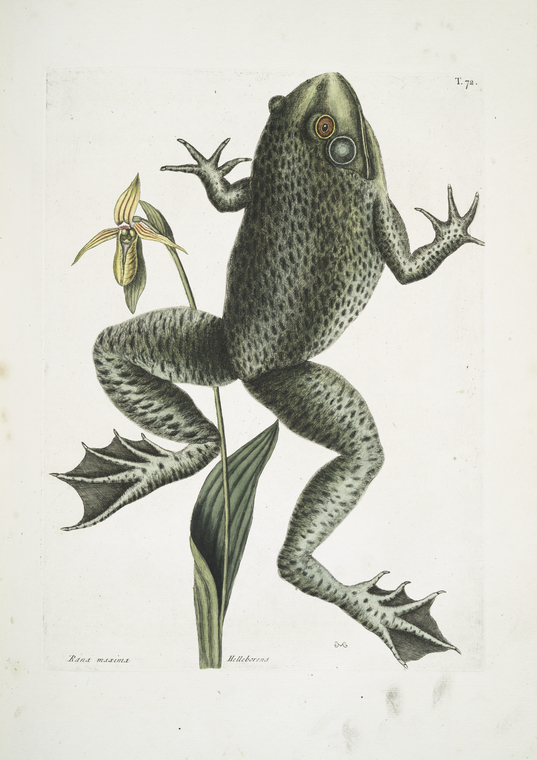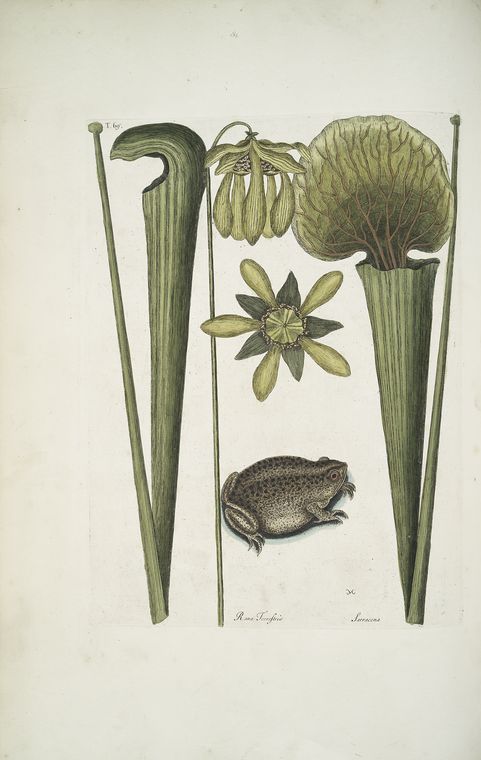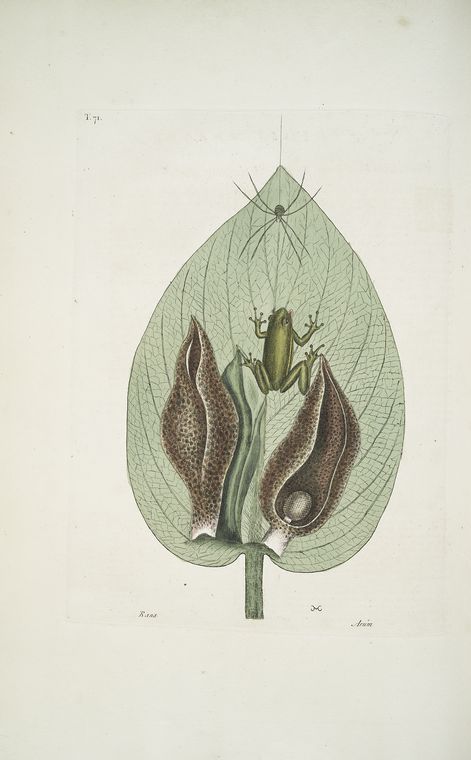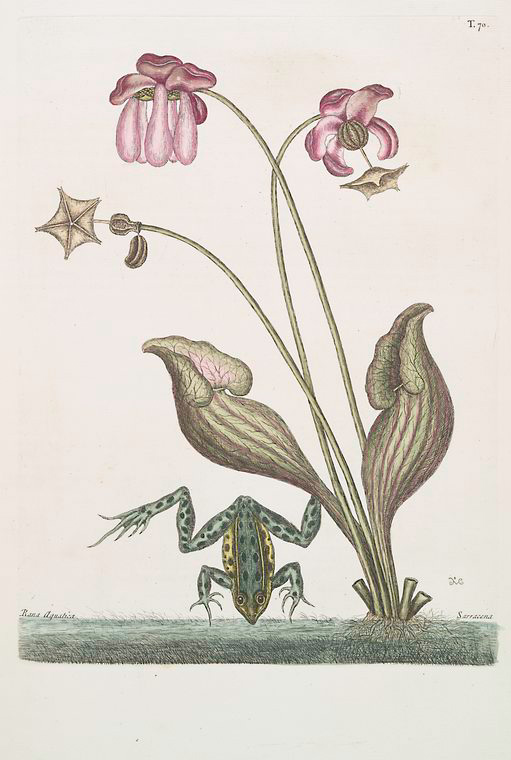Before Kermit, There Was Catesby

Kermit the Frog has always been my favorite Jim Henson creation, and my first childhood crush as well. Although many people associate Kermit with The Muppet Show, he played many parts on Sesame Street over the years too, and I always loved seeing him in whatever role he played.
My devotion to Kermit has led to a love for frogs in print as well, from Arnold Lobel's Frog and Toad books to Ken Kimura's 999 Frogs. And whenever I examine illustrated natural histories in the Rare Book Division where I work, I'm always on the lookout for Kermit's amphibious ancestors. Some of my favorite frogs are in Mark Catesby's The natural history of Carolina, Florida, and the Bahama Islands: containing the figures of birds, beasts, fishes, serpents, insects and plants: particulary the forest-trees, shrubs, and other plants, not hitherto described, or very incorrectly figured by authors...
Mark Catesby was a largely self-trained English botanist and plant collector, and he accomplished something quite tremendous: he researched, wrote, and illustrated the first book to depict North America's plants and animals. Catesby traveled to the English colonies in North America twice, spending many years there collecting seeds and specimens, and studying and sketching the continent's birds, fish, snakes, and mammals.
The frogs pictured above are reproduced from original hand colored etchings in the Rare Book Division's 1754 edition of Catesby's book. His book contains lots more than frogs, though, and you can browse more flora and fauna (including some Big Birds!) here. And if you'd like to read his monumental work in its entirety, you can do so here (Volume 1) and here (Volume 2).
Read E-Books with SimplyE
 With your library card, it's easier than ever to choose from more than 300,000 e-books on SimplyE, The New York Public Library's free e-reader app. Gain access to digital resources for all ages, including e-books, audiobooks, databases, and more.
With your library card, it's easier than ever to choose from more than 300,000 e-books on SimplyE, The New York Public Library's free e-reader app. Gain access to digital resources for all ages, including e-books, audiobooks, databases, and more.
If you don’t have an NYPL library card, New York State residents can apply for a digital card online or through SimplyE (available on the App Store or Google Play).
Need more help? Read our guide to using SimplyE.



Comments
Before Catesby, There Was Catesby
Submitted by Dave Elliott (not verified) on October 24, 2014 - 3:45pm
Catesby and Environmental History
Submitted by Linda Lear (not verified) on October 25, 2014 - 1:38pm
First edition is online, too!
Submitted by Leslie K. Overstreet (not verified) on October 29, 2014 - 10:34am